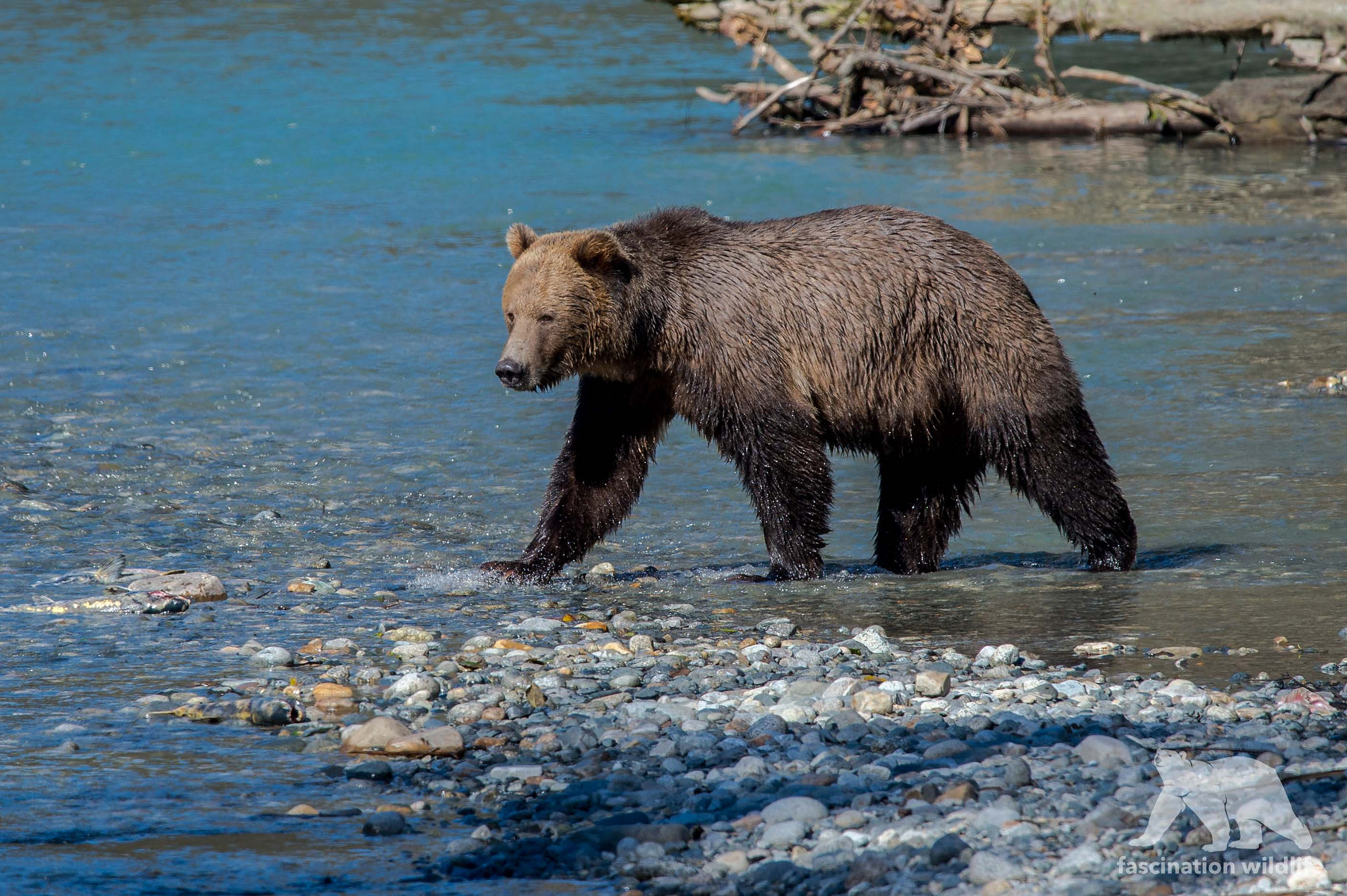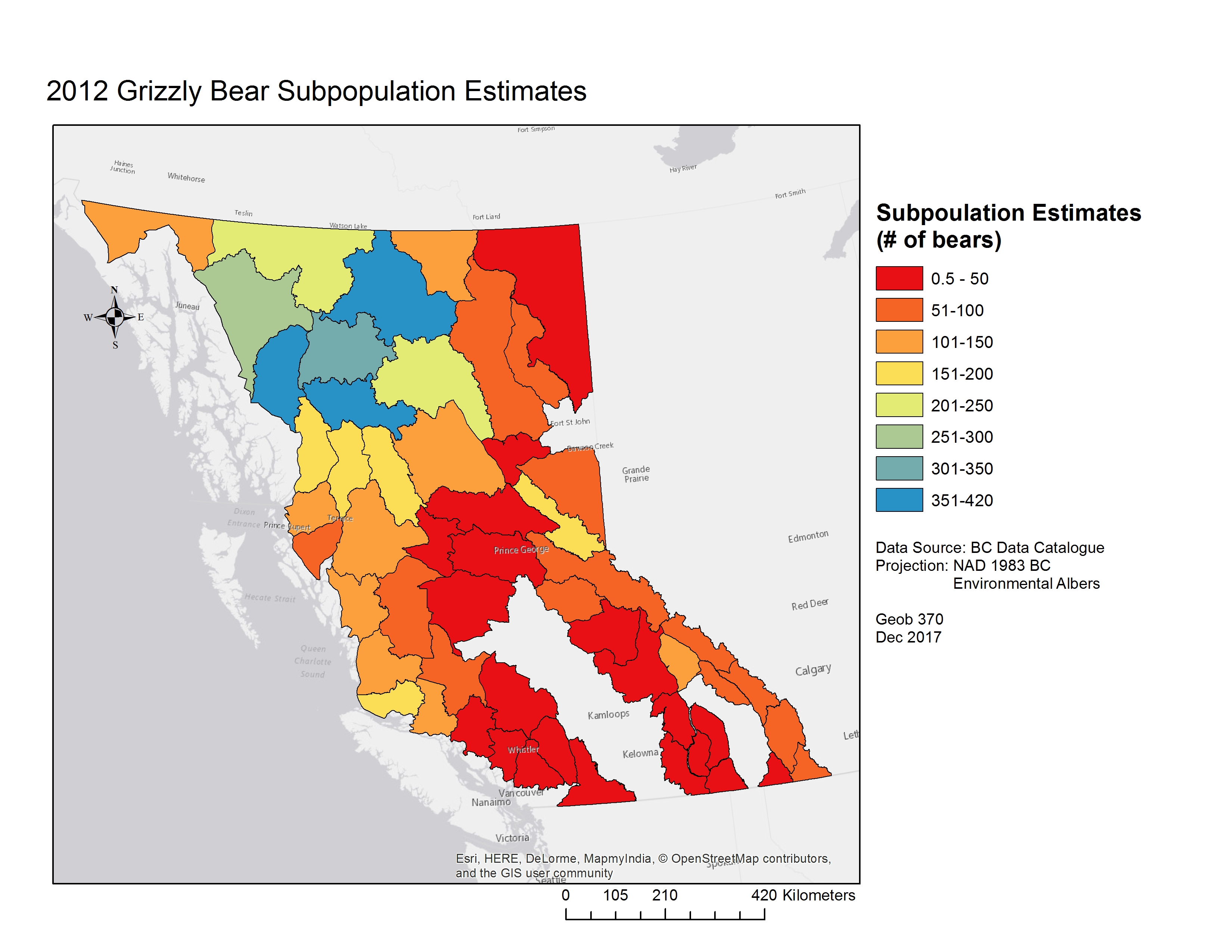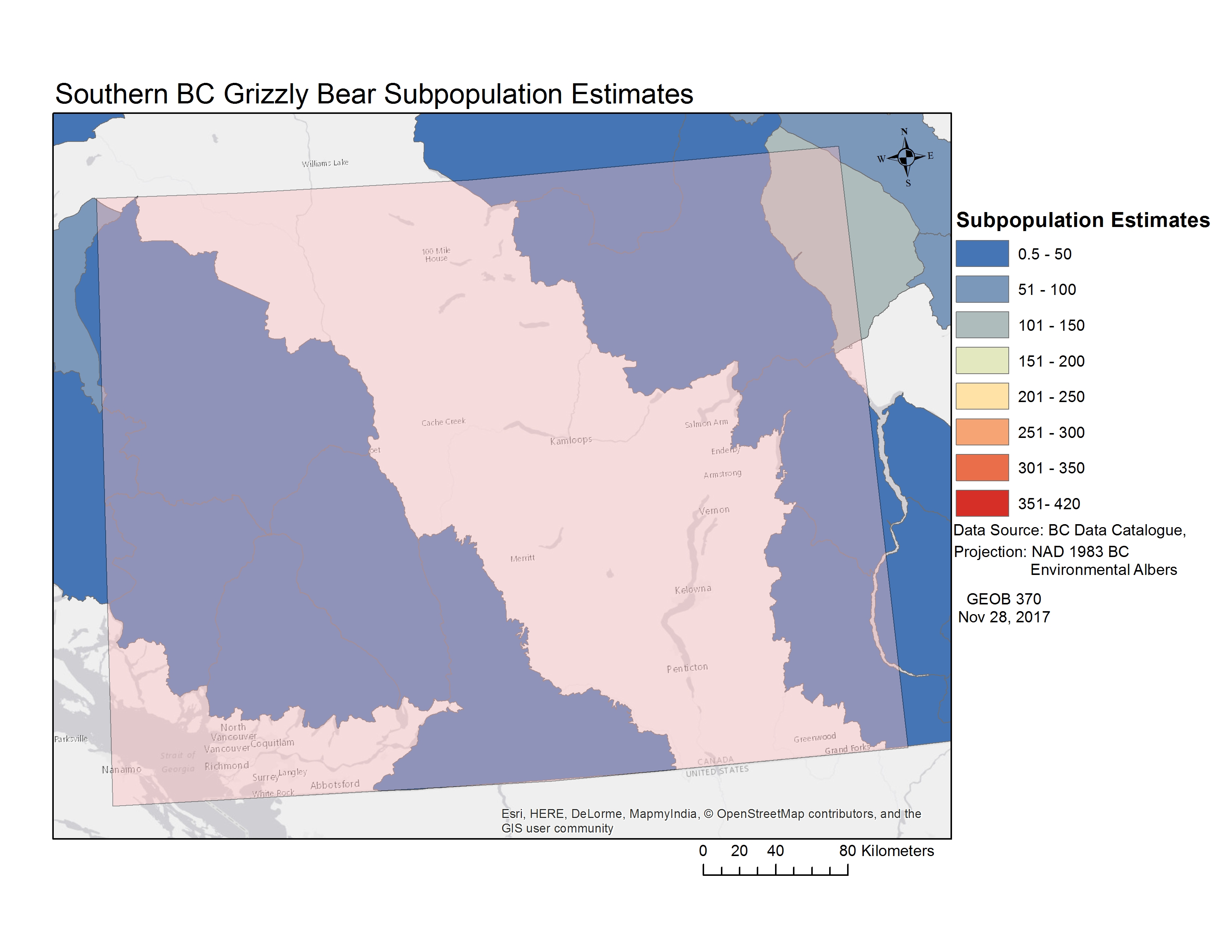B.C. Grizzlies: A Southern Population In Crisis

Fig 1. Photograph of a grizzly bear crossing a stream. Photo credit: fascination wildlife
Grizzly bears are a charismatic megafauna that play critical roles as keystone predators throughout North America and British Columbia. British Columbia is home to approximately 15 000 bears, accounting for around a quarter of the entire North American population (BC Ministry of Environment, 2012). In British Columbia, grizzly bears are classified as a species of Special Concern by the federal Committee on the Status of Endangered Wildlife in Canada, and have been defined by the province as vulnerable; their population isn’t currently endangered, but are particularly sensitive to change (BC Ministry of Environment, 2012).
Grizzlies don’t experience the same levels of threat throughout BC, however. Some subpopulations are considered to be more threatened than others; there are 9 subpopulations currently considered threatened by the province, and 3 that are considered to be locally extinct (BC Ministry of Environment, 2012). 11 of these 12 subpopulations are in Southern and South-Central BC, so significant efforts need to be made in order to provide these populations with protection and support (Fig 2).
http://www.env.gov.bc.ca/soe/indicators/plants-and-animals/grizzly-bears.html

Fig 2. Map of grizzly bear subpopulation estimates in British Columbia, as of 2012. Areas with no colour represent regions of B.C. with extirpated subpopulations.
The province’s efforts to protect these vulnerable subpopulations appear to have fallen short. A 2017 independent audit of BC’s grizzly bear management found major inadequacies in their management and strategy: from overlapping responsibilities between two ministries— the Ministry of Environment (MoE) and the Ministry of Forests Lands and Natural Resource Operations (MFLRNO), to a lack of monitoring, a lack of accountability, and a failure to secure crucial grizzly habitat (Office of the Auditor General of British Columbia, 2017). It is clear that significant progress on these fronts needs to be made in order to ensure the long-term viability of these subpopulations.
Context and Relevance
In the Okanagan Valley and Thompson-Nicola in the southern interior of BC, a large grizzly subpopulation has been extirpated from the region (Fig 3). This is especially problematic for the extant subpopulations surrounding this region; many are already considered to be vulnerable by the province. Limitations in subpopulation connectivity and increasing isolation can have dramatic ecological consequences: allee effects; where low population densities make it difficult to find a mate, inbreeding depression; where being forced to mate with related individuals leads to the decline of a population’s fitness, and increasing human activity and fragmentation from roads can lead to increases in human-bear conflict, all of which can further contribute to declines in subpopulation abundances.

Fig 3. Map of southern B.C. grizzly subpopulations, with our region of study highlighted in pink.
Our study hopes to utilize spatial analyses to identify population centres within these vulnerable subpopulations, and examine the viability of supporting them through habitat connectivity and the reintroduction of grizzlies to the Okanagan-Thompson.
Questions
The questions relating to grizzly bear populations we hope to answer through spatial analysis are:
- Where could grizzlies be found within these vulnerable extant subpopulations surrounding the Okanagan-Thompson?
- Are there any wildlife corridors that could currently connect the subpopulations on either side of the extirpated Okanagan-Thompson subpopulation?
- Is a grizzly bear reintroduction into the Okanagan-Thompson possible, and where?